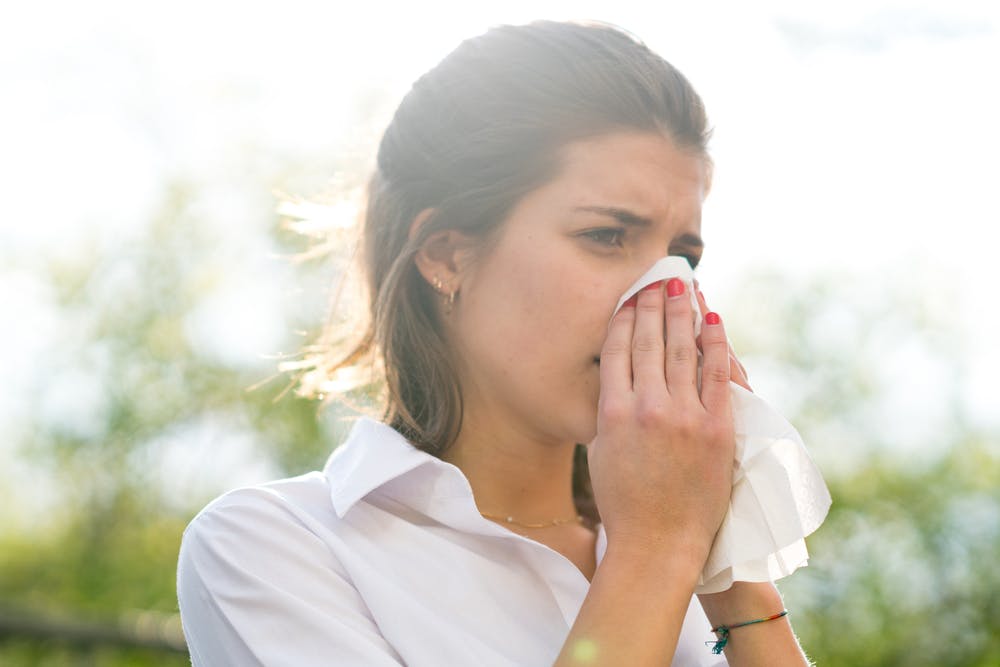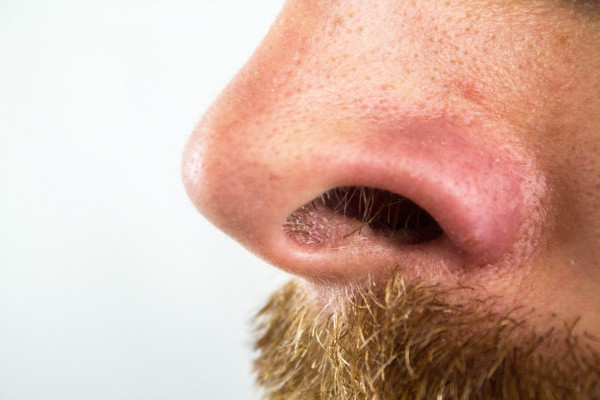Why Your Nose Runs in the Cold: The Science Behind a Clever Human Adaptation
It’s a familiar winter moment. You step outside into crisp, chilly air, and within minutes, your nose starts to run. You might fumble for a tissue, assuming it’s an early sign of a cold. But what if that dripping nose isn’t a sign of illness at all? What if it’s your body’s built-in climate control system quietly doing its job?
This simple, everyday occurrence—so common it barely draws notice—is actually a remarkable example of how human biology adapts to the environment. From ancient folklore about “winter colds” to modern medical explanations, the runny winter nose tells a story that connects both cultural wisdom and scientific discovery.

The Ancient View: Myths and Meanings Behind the Winter Runny Nose
Long before science explained bodily processes, people relied on observation and storytelling to make sense of their world. In many cultures, a runny nose in winter was seen as a symbol of imbalance or cleansing.
In traditional Chinese medicine, for instance, cold weather was believed to disturb the body’s natural energy flow, prompting the body to expel “cold wind” through symptoms like a dripping nose or watery eyes. In some Northern European folk traditions, people thought a runny nose in winter meant the body was “washing out the cold,” a natural purification to keep the lungs clear.
Even today, phrases like “catching a cold” reflect centuries-old beliefs linking chilly weather directly to illness. While modern science now knows viruses—not the temperature—cause colds, the association between winter and runny noses has deep cultural roots.
These stories, though not scientifically precise, carried an intuitive understanding: the human body responds dynamically to its environment. And as it turns out, they weren’t entirely wrong—because when your nose runs in the cold, it’s indeed responding to the climate.

The Modern Explanation: Your Nose as a Climate Control System
Inside your nose lies a finely tuned biological system designed to protect your lungs. Every breath you take passes through nasal passages lined with soft tissue, blood vessels, and mucous membranes. These structures work together to ensure that the air reaching your lungs is clean, moist, and warm enough for comfortable breathing.
When you breathe in cold, dry air, your nasal passages instantly adjust. The blood vessels inside your nose expand, allowing more warm blood to flow near the surface. This warms the incoming air before it reaches your lungs. At the same time, the mucous membranes secrete additional moisture—what we recognize as mucus—to humidify the air and trap tiny particles like dust, pollen, or bacteria.
This natural humidifier is essential for respiratory health. Without it, the delicate tissues of the lungs could dry out and become irritated, making it harder to breathe efficiently.

Why Your Nose Drips in Cold Weather
The runny part happens when that warm, moist air meets the freezing temperatures outside your body. As the air exits your nose, the moisture it carries condenses on the cooler surfaces near your nostrils—similar to how warm breath fogs up a window on a winter day. Some of this moisture collects and drips, producing that all-too-familiar winter sniffle.
Scientists refer to this process as cold-induced rhinorrhea. According to research published in Annals of the Royal College of Surgeons of England, up to 90% of people experience this phenomenon in cold weather. It’s not an infection or an allergic reaction—it’s simply the body’s natural response to environmental change.
In essence, that runny nose is proof that your respiratory system is actively protecting you, making sure the air you inhale remains at just the right balance of temperature and humidity.

The Role of Blood Vessels and Mucus
The inside of the nose contains a complex network of blood vessels that can expand or contract in seconds. When the temperature drops, these vessels widen to bring more warm blood to the nasal surface. This warmth helps prevent the cold air from shocking your airways.
Meanwhile, the mucous membranes produce more mucus to counteract the dryness of winter air. Cold air typically holds less moisture, so your body compensates by humidifying it internally. This mucus also serves as a protective barrier, trapping harmful particles before they can enter your respiratory system.
While the extra mucus may feel inconvenient, it plays a vital role in maintaining the balance of your respiratory tract—a natural filter and heater combined in one elegant system.
The Science of Condensation: Nature’s Physics at Work
To understand why your nose drips, it helps to think of basic physics. Warm air holds more water vapor than cold air. When the warm, moist air from your lungs meets the cooler environment near your nostrils, it cools quickly, causing the water vapor to condense into liquid droplets. This is the same process that creates dew on grass in the morning or fog on a cold mirror.
Your nose effectively becomes a mini climate chamber—balancing temperature and humidity through precise biological regulation. It’s an intricate design that scientists still study to improve medical treatments for sinus conditions and respiratory issues.

A Seasonal Adaptation with Evolutionary Roots
From an evolutionary perspective, the human nose evolved to adapt to diverse climates. Anthropologists have found that the shape and structure of the nose vary depending on ancestral environments. People from colder, drier regions often have narrower nasal passages, which help warm and humidify air more efficiently before it reaches the lungs.
This suggests that the body’s response to cold air—like producing extra mucus—has deep evolutionary roots. It’s not just a winter inconvenience; it’s a biological strategy honed over thousands of years to keep humans breathing comfortably in varying climates.
Common Misconceptions: Cold Weather vs. Colds
One of the most persistent myths is that cold air directly causes illness. While exposure to cold can make your nose run, the common cold is caused by viruses, not temperature. However, winter conditions can indirectly make it easier for viruses to spread.
Cold, dry air can dry out the protective mucus lining in your nasal passages, reducing its ability to trap pathogens. Indoor heating systems further dehumidify the air, which may irritate nasal tissues. These factors can make you more susceptible to infection if you come into contact with a virus—but the chill itself isn’t the culprit.
So, when your nose runs during a brisk winter walk, it’s not because you’re “catching a cold.” It’s because your body is doing exactly what it’s designed to do: adjust to the environment and protect your lungs.

How to Manage Winter Runny Nose Naturally
While a runny nose in cold weather is harmless, a few simple habits can make it more comfortable.
- Stay hydrated: Drinking enough water keeps your mucous membranes functioning properly.
- Use a humidifier indoors: Adding moisture to the air can prevent your nasal passages from drying out.
- Gently blot, don’t wipe: Excessive wiping can irritate the skin around your nose.
- Warm your face before heading out: Covering your nose and mouth with a scarf can reduce condensation and keep nasal passages from overworking.
These small steps support your body’s natural defences while maintaining comfort through the colder months.
Cultural Reflections: The Beauty of Everyday Biology
Across history, people have found meaning in simple bodily reactions like sneezing, shivering, or a runny nose. Some saw them as signs from nature, others as moments of vulnerability or renewal. Today, science gives us the language to describe what’s really happening—but the wonder remains the same.
Your body’s response to cold air is not just a mechanical process; it’s an elegant example of harmony between physiology and the natural world. Each breath you take on a cold day tells a story of adaptation—of how the human body has learned to coexist with the changing seasons.
A Reflection on Human Curiosity
It’s fascinating that something as ordinary as a dripping nose can reveal so much about human evolution, physics, and health. What once seemed like an inconvenience turns out to be evidence of an intelligent design shaped by millennia of adaptation.
Our ability to ask why—why noses run, why we sneeze, why we shiver—reflects the same curiosity that drives scientific discovery. From folklore to modern medicine, humanity has always sought to understand itself through observation and wonder.
So, the next time your nose starts to run in the cold, take a moment to appreciate it. That tiny drip is a sign of a system working perfectly—a small reminder that the human body, in its quiet wisdom, is always looking out for you.
Sources
- Harvard Health Publishing – Why your nose runs when it’s cold outside
- Cleveland Clinic – Cold Weather and Runny Nose: Understanding Cold-Induced Rhinorrhea
- Annals of the Royal College of Surgeons of England – The physiology of cold-induced rhinorrhea
- National Institutes of Health (NIH) – Human nasal adaptation to climate
- Mayo Clinic – How mucus protects your respiratory system


